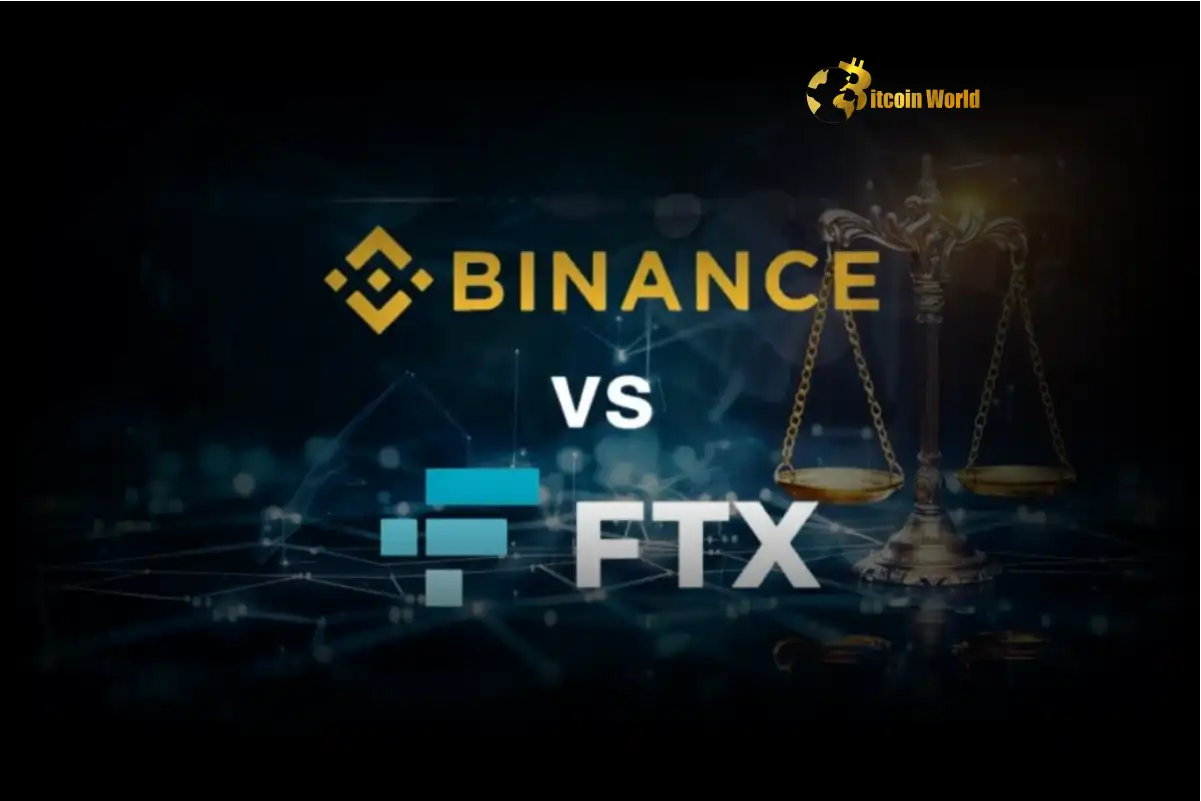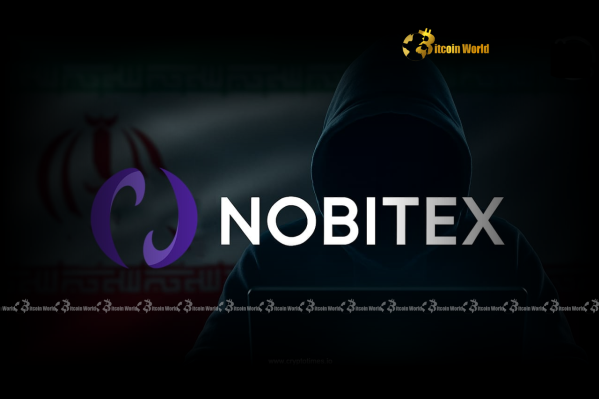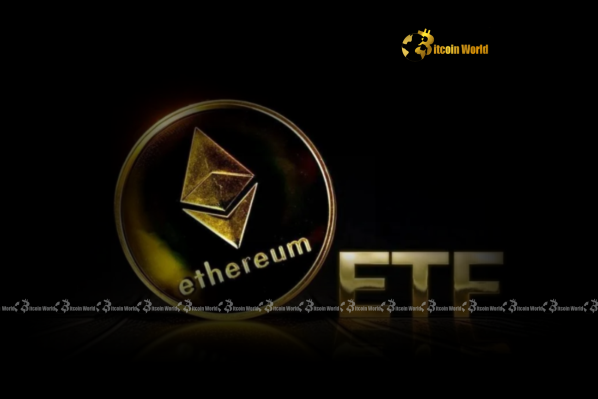BitcoinWorld

Tether’s Revolutionary Move: US Stablecoin Market Entry Set to Transform Crypto Finance
The world of cryptocurrency is in constant flux, a dynamic landscape where innovation and regulation dance a complex tango. At the heart of this evolution lies the stablecoin, a digital asset designed to maintain a stable value, typically pegged to a fiat currency like the US Dollar. Among these, Tether’s USDT has long reigned supreme, dominating the market with its vast liquidity and widespread adoption. Now, a monumental shift is on the horizon: Tether is poised to make a significant entry into the U.S. market with a new, institutionally focused stablecoin. This strategic move, announced by Tether CEO Paolo Ardoino, signals a pivotal moment for the entire crypto ecosystem, particularly for the future of the Tether stablecoin and its role in mainstream finance.
What is the Significance of Tether’s U.S. Stablecoin Ambition?
Tether’s existing USDT is a cornerstone of the global crypto market, facilitating billions in daily transactions and providing a vital bridge between traditional finance and decentralized applications. However, its operations have historically been global, often navigating various regulatory frameworks without a specific U.S. regulatory anchor. The announcement of a dedicated U.S. institutional Tether stablecoin marks a profound strategic pivot, aiming to tap directly into the world’s largest financial market under a clear regulatory umbrella.
- Targeting Institutional Adoption: Unlike its existing retail-focused USDT, this new offering is designed specifically for institutional players. This means it will cater to the stringent compliance, reporting, and operational needs of banks, hedge funds, and large corporations looking to engage with digital assets.
- Regulatory Alignment: The timing is crucial. Tether’s move follows the signing of the GENIUS Act, a landmark piece of legislation that establishes new rules for stablecoin issuers in the U.S. This provides a clearer regulatory pathway, reducing uncertainty and potentially unlocking significant institutional capital.
- Enhanced Trust and Credibility: Operating under a U.S. regulatory framework could significantly bolster Tether’s credibility and transparency, addressing past concerns and fostering greater trust among traditional financial entities.
The GENIUS Act: Paving the Way for a New Era of Stablecoins
The passage of the GENIUS Act (Generating Innovative New Ideas for the U.S. Stablecoin Market) is a game-changer. For years, the lack of comprehensive stablecoin regulation in the U.S. created a grey area that deterred many traditional financial institutions. The Act aims to provide:
- Clearer Definitions: Establishing what constitutes a stablecoin and differentiating between various types.
- Issuance Requirements: Setting standards for reserves, audits, and operational resilience for stablecoin issuers.
- Consumer Protection: Implementing safeguards to protect users and ensure market integrity.
For Tether, this legislative clarity is not just an opportunity; it’s an invitation. By aligning with these new rules, Tether can offer a product that meets the high standards of U.S. financial regulators, making its new Tether stablecoin a more palatable option for risk-averse institutions. This regulatory embrace could be the key to unlocking the next wave of crypto adoption.
Understanding the ‘Institutional’ Stablecoin: A Deeper Dive
What exactly differentiates an ‘institutional’ stablecoin from one designed for retail users? It’s more than just a label; it involves fundamental differences in design, compliance, and target audience.
| Feature | Retail Stablecoin (e.g., current USDT) | Institutional Stablecoin (Tether’s U.S. plan) |
|---|---|---|
| Primary Users | Individual traders, DeFi users, crypto exchanges | Banks, hedge funds, asset managers, corporations |
| Regulatory Oversight | Varies by jurisdiction, often less direct | Strict U.S. federal or state regulation (e.g., GENIUS Act) |
| Compliance Requirements | KYC/AML on exchanges, but less direct for issuer | Rigorous KYC/AML, robust audit trails, financial reporting |
| Reserve Management | Regular attestations, but often opaque to external bodies | Highly transparent, potentially direct oversight by regulators |
| Use Cases | Trading, remittances, DeFi lending/borrowing | Interbank settlements, corporate treasury management, tokenized assets |
This institutional focus means a more tightly controlled, transparent, and compliant product designed to integrate seamlessly with existing financial infrastructures, rather than operate alongside them in a less regulated space. The new Tether stablecoin will likely be designed with these specific requirements in mind.
Benefits and Potential Impact on the U.S. Financial Landscape
Tether’s entry into the U.S. institutional stablecoin market could have far-reaching positive implications:
- Enhanced Liquidity: Introducing a compliant, institutional-grade stablecoin could inject significant liquidity into the U.S. digital asset ecosystem, making it easier for large entities to move capital in and out of crypto.
- Bridging TradFi and DeFi: A U.S.-regulated institutional stablecoin can serve as a crucial bridge, allowing traditional financial institutions to access decentralized finance opportunities while adhering to their regulatory obligations.
- Innovation and Competition: Tether’s move will likely spur further innovation and competition among stablecoin issuers, potentially leading to better products, lower costs, and more robust infrastructure.
- Global Leadership: By fostering a robust and regulated stablecoin market, the U.S. can solidify its position as a leader in digital asset innovation, attracting investment and talent.
- Efficient Settlements: Institutional stablecoins can enable faster, cheaper, and more efficient cross-border payments and interbank settlements, reducing reliance on outdated systems.
What Challenges Might Tether Face in the U.S. Market?
Despite the immense potential, Tether’s U.S. venture is not without its hurdles. The company has faced scrutiny in the past regarding the transparency of its reserves and its banking relationships. While the new U.S. stablecoin will operate under different, stricter rules, public perception and past narratives could still pose challenges.
- Regulatory Scrutiny: Even with the GENIUS Act, Tether will be under intense scrutiny from U.S. regulators. Compliance will need to be impeccable, and any misstep could lead to significant setbacks.
- Competition: The U.S. stablecoin market already has established players like Circle (USDC) and Paxos (USDP, BUSD). Tether will need to differentiate its offering and convince institutions of its superior value proposition and reliability.
- Reputation Management: Overcoming lingering skepticism from past controversies will be crucial. Tether will need to demonstrate unwavering commitment to transparency and compliance to win over a cautious institutional audience.
- Technological Integration: Seamless integration with existing institutional systems will be key. This requires robust API development, strong security protocols, and reliable infrastructure.
Tether’s commitment to not going public, as confirmed by Paolo Ardoino, suggests a long-term strategic focus on building robust infrastructure and trust, rather than chasing short-term market valuations. This could be a significant advantage in navigating the complex institutional landscape.
The Future of Stablecoins and Tether’s Role
Tether’s bold move into the U.S. institutional market is a strong indicator of the evolving landscape for digital assets. It signifies a maturation of the crypto industry, moving from fringe speculation to integrated financial infrastructure. As regulatory clarity emerges, we can expect to see more traditional financial institutions explore the benefits of stablecoins for various use cases, from wholesale payments to tokenized assets.
The success of this new Tether stablecoin could set a precedent for how other global crypto entities engage with regulated markets. It could accelerate the mainstream adoption of digital currencies, not just for trading, but as fundamental building blocks of a more efficient and interconnected global financial system. The coming months will be critical, as the world watches to see how Tether executes this ambitious plan and what ripple effects it creates across the entire crypto economy.
In conclusion, Tether’s impending entry into the U.S. market with an institutional stablecoin is a transformative development. Driven by regulatory clarity from the GENIUS Act and a strategic focus on institutional adoption, this move has the potential to reshape the landscape of digital finance. While challenges remain, the benefits of increased liquidity, bridging traditional finance with decentralized systems, and fostering innovation are immense. This pivotal moment could mark a new chapter for stablecoins, solidifying their role as essential components of the future financial infrastructure.
Frequently Asked Questions (FAQs)
1. What is an institutional stablecoin, and how is it different from a retail stablecoin?
An institutional stablecoin is designed specifically for use by large financial institutions (banks, hedge funds, corporations) and adheres to strict regulatory and compliance standards. It often focuses on high-volume, secure transactions like interbank settlements or corporate treasury management. In contrast, a retail stablecoin (like the current USDT) is primarily used by individual traders and crypto exchanges for everyday trading, remittances, and DeFi activities, often with less direct regulatory oversight on the issuer’s end.
2. How does the GENIUS Act impact Tether’s plans for a U.S. stablecoin?
The GENIUS Act provides a much-needed regulatory framework for stablecoin issuers in the U.S., setting clear rules for reserves, audits, and consumer protection. For Tether, this clarity offers a pathway to launch a compliant stablecoin that can operate legally and confidently within the U.S. financial system, attracting institutional clients who require regulatory certainty.
3. What are the main benefits of Tether entering the U.S. institutional stablecoin market?
Tether’s entry can bring several benefits, including increased liquidity in the U.S. digital asset market, a stronger bridge between traditional finance and decentralized finance, enhanced competition among stablecoin providers, and potentially more efficient and cheaper financial settlements for institutions.
4. Will Tether’s new U.S. institutional stablecoin replace the existing USDT?
No, it is highly unlikely that the new U.S. institutional stablecoin will replace the existing USDT. Tether CEO Paolo Ardoino’s statements suggest this will be a separate product tailored for the U.S. institutional market, coexisting with USDT, which continues to serve a global retail and crypto-native audience across various blockchains.
5. What challenges might Tether face in launching this new stablecoin?
Tether faces challenges such as intense regulatory scrutiny from U.S. authorities, stiff competition from established U.S.-regulated stablecoins like USDC, the need to overcome past reputational concerns regarding transparency, and the technical challenge of integrating seamlessly with traditional financial systems.
Did you find this article insightful? Share it with your network on social media and let’s discuss the future of stablecoins!
To learn more about the latest crypto market trends, explore our article on key developments shaping the digital asset space and its institutional adoption.
This post Tether’s Revolutionary Move: US Stablecoin Market Entry Set to Transform Crypto Finance first appeared on BitcoinWorld and is written by Editorial Team





